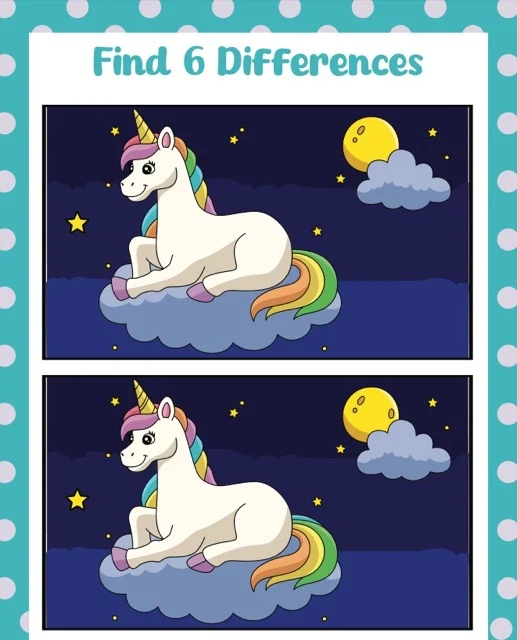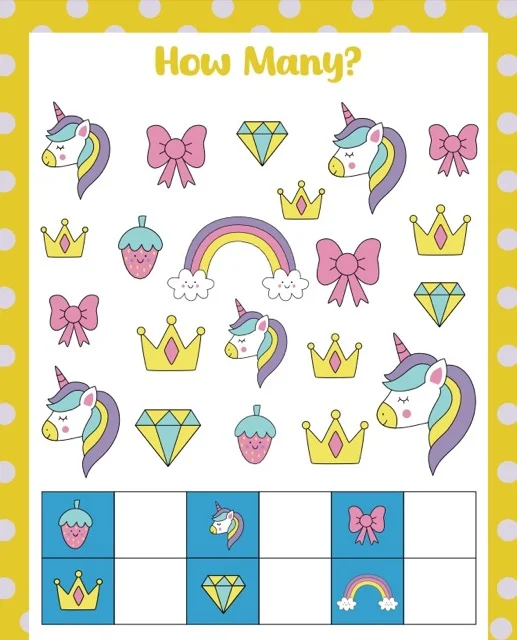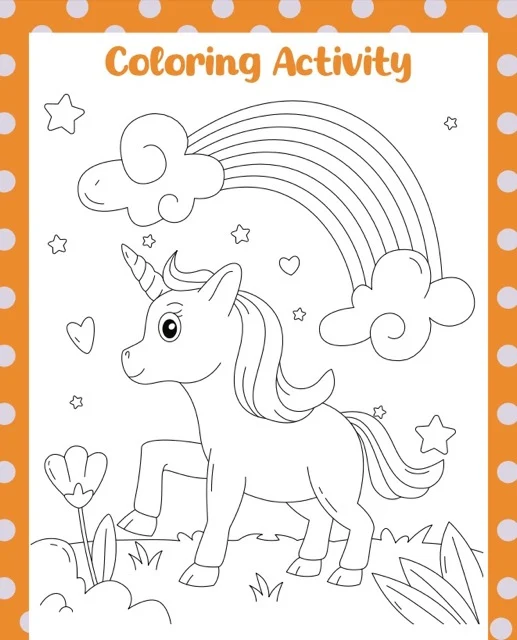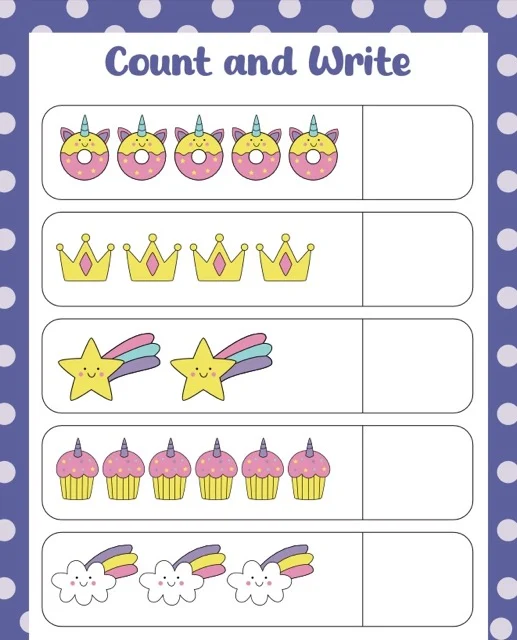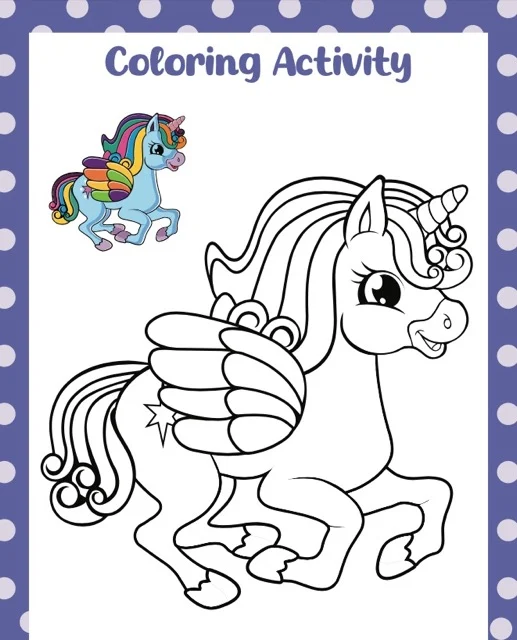Unicorns: Fostering Early Childhood Development
This briefing document advocates for unicorn-themed activities to enhance early childhood development. These activities, which require minimal materials, promote fine motor skills, cognitive abilities, early math skills, and creativity. Their versatility allows for use in educational settings, homes, and parties. The document suggests further research into adapting activities for diverse learners and cultural contexts, and exploring digital applications. Ultimately, it promotes unicorns as a fun and effective tool for fostering learning and essential skills in young children.
Unicorn Activities for Early Childhood Development
Briefing Document: Unicorn Activities for Early Childhood Development
Theme: Unicorn-themed activities offer a playful and engaging approach to learning and skill development in preschool and early elementary children.
Key Ideas and Facts:
●
Engaging Learning: The use of a popular and whimsical theme like unicorns helps to capture children's interest and motivate them to participate in learning activities. "These activities are generally suitable for preschool and early elementary school children, but can be enjoyed by anyone who loves unicorns!" (Unicorn Activities for Kids)
●
Skill Development: These activities are designed to promote a range of skills, including:
○
Fine Motor Skills: Coloring, tracing, and cutting activities enhance hand-eye coordination and dexterity. “Tracing helps improve fine motor control and handwriting in young children” (Study Guide).
○
Cognitive Skills: Activities like mazes and "spot the difference" encourage problem-solving, logical reasoning, and visual perception. "Spot the difference activities enhance visual perception and attention to detail." (Study Guide).
○
Early Math Skills: Counting activities reinforce number recognition and basic counting principles. "Counting unicorns and objects reinforces early math skills, specifically counting and number recognition" (Study Guide).
○
Creativity: Coloring pages and other creative activities provide outlets for artistic expression and imagination.
●
Versatility: These activities can be implemented in various settings:
○
Educational Settings: They can be integrated into lesson plans for preschool, kindergarten, and early elementary classrooms. "Absolutely! These unicorn activities can be incorporated into lesson plans for preschool, kindergarten, and early elementary classrooms." (Unicorn Activities for Kids)
○
Home: Parents can use them to supplement their child's learning or for fun family activities.
○
Parties and Events: They can be used as entertainment, party favors, or themed craft activities for birthday parties, playdates, and other gatherings. "Definitely! These unicorn activities can add a touch of magic to birthday parties, playdates, or any other gathering for young children." (Unicorn Activities for Kids)
●
Accessibility: The activities require minimal materials – a printer, paper, and basic art supplies (crayons, markers, colored pencils).
Supporting Quotes:
●
"Unicorn-themed activities offer a fun and engaging way for children to learn and practice skills like counting, fine motor control, problem-solving, and creativity." (Study Guide)
●
"Maze activities encourage problem-solving skills by requiring children to find a path from a starting point to an endpoint." (Study Guide)
●
"These unicorn activities can add a touch of magic to birthday parties, playdates, or any other gathering for young children." (Unicorn Activities for Kids)
Analysis:
The provided materials strongly suggest that incorporating engaging themes like unicorns into educational activities can be a highly effective strategy for early childhood development. The combination of visual appeal, playful contexts, and targeted skill practice makes these activities a valuable tool for educators and parents alike.
Potential Areas for Further Exploration:
●
Differentiation: Exploring how these activities can be adapted for different learning styles and developmental levels.
●
Cultural Relevance: Investigating ways to incorporate diverse unicorn representations or adapt the theme to resonate with different cultural backgrounds.
●
Digital Integration: Exploring the potential for digital versions of these activities to enhance interactivity and engagement.
Conclusion:
Unicorn-themed activities provide a multi-faceted approach to supporting early childhood development. By tapping into the inherent appeal of this mythical creature, these activities offer a fun and effective way to foster a love of learning and promote essential skills in young children.
Unicorn Activities for Kids
Unicorn Activities FAQ
What kinds of activities are included?
This collection features a variety of unicorn-themed activities designed to engage and entertain children. You'll find:
●
Counting Activities: Practice counting skills with colorful unicorn illustrations.
●
Coloring Activities: Unleash creativity with charming unicorn coloring pages.
●
Matching Activities: Develop observation and logic skills by matching unicorns and objects.
●
Tracing Activities: Improve fine motor control and handwriting through tracing exercises.
●
Mazes: Solve fun mazes to guide unicorns to their destinations.
●
Spot the Difference: Enhance visual perception by identifying differences between two unicorn pictures.
What age group are these activities best suited for?
These activities are generally suitable for preschool and early elementary school children, but can be enjoyed by anyone who loves unicorns!
What skills can children develop through these activities?
Unicorn activities offer a fun way to develop various skills, including:
●
Counting and Number Recognition: Counting unicorns and objects helps reinforce early math skills.
●
Fine Motor Skills: Coloring, tracing, and other activities promote hand-eye coordination and dexterity.
●
Problem Solving: Mazes and "spot the difference" activities encourage critical thinking and logical reasoning.
●
Creativity: Coloring pages provide an outlet for artistic expression.
●
Observation Skills: Matching activities and "spot the difference" exercises sharpen visual attention to detail.
Are these activities printable?
Yes, these activities are designed to be printed. You can print them at home or at a print shop for immediate use.
Can these activities be used in educational settings?
Absolutely! These unicorn activities can be incorporated into lesson plans for preschool, kindergarten, and early elementary classrooms. They provide a fun and engaging way to learn and practice various skills.
What materials do I need for these activities?
Most activities require basic supplies such as:
●
Printer
●
Paper
●
Crayons, markers, or colored pencils
Are these activities appropriate for both boys and girls?
Yes, these activities are suitable for children of all genders. The unicorn theme is universally appealing and can spark the imagination of any child.
Can these activities be used for parties or other special occasions?
Definitely! These unicorn activities can add a touch of magic to birthday parties, playdates, or any other gathering for young children. They can be used as entertainment, party favors, or even as part of a themed craft activity.
Unicorn Activities: A Study Guide
Unicorn Activities: A Study Guide
Short Answer Questions (2-3 sentences each):
1.
What are the primary educational benefits of using unicorn-themed activities for young children?
2.
How do "spot the difference" activities contribute to a child's development?
3.
Why is tracing considered beneficial for preschool and early elementary school children?
4.
Besides educational settings, where else might these unicorn activities be useful?
5.
What are the basic material requirements for most of the unicorn activities described?
6.
List three different types of activities included in the "Unicorn Activities for Kids" collection.
7.
What specific skill is targeted by having children count unicorns and other objects in the activities?
8.
How do maze activities promote problem-solving skills in children?
9.
Are these activities specifically designed for a particular gender? Explain.
10.
What makes unicorn-themed activities suitable for parties or special occasions?
Short Answer Key:
1.
Unicorn-themed activities offer a fun and engaging way for children to learn and practice skills like counting, fine motor control, problem-solving, and creativity. They can also enhance observation skills and logical reasoning.
2.
"Spot the difference" activities enhance visual perception and attention to detail. Children need to carefully observe two similar images and identify the discrepancies between them, which helps them develop their visual discrimination skills.
3.
Tracing helps improve fine motor control and handwriting in young children. By practicing tracing lines and shapes, they develop the hand-eye coordination and dexterity needed for writing.
4.
Besides classrooms, these activities can be used for parties, playdates, or other gatherings for young children. They can serve as entertainment, party favors, or part of a themed craft activity.
5.
You will need a printer, paper, and coloring materials like crayons, markers, or colored pencils for most of the unicorn activities.
6.
The "Unicorn Activities for Kids" collection includes counting activities, coloring activities, and matching activities. It also includes tracing activities, mazes, and "spot the difference" activities.
7.
Counting unicorns and objects reinforces early math skills, specifically counting and number recognition. Children learn to associate numerals with quantities through these activities.
8.
Maze activities encourage problem-solving skills by requiring children to find a path from a starting point to an endpoint. This involves planning, spatial reasoning, and logical thinking to navigate the maze successfully.
9.
No, these activities are not designed for a specific gender. The unicorn theme is universally appealing and can be enjoyed by children of all genders.
10.
Unicorn-themed activities are suitable for parties because they add a magical and whimsical touch to the celebration. They can keep children entertained, provide opportunities for creative expression, and make for memorable party favors.
Essay Questions:
1.
Discuss the importance of incorporating playful learning activities, such as the unicorn-themed activities presented, into early childhood education.
2.
Analyze the various ways in which unicorn activities can foster a child's cognitive development. Use specific examples from the provided source material.
3.
Evaluate the effectiveness of using themed activities, like the unicorn activities, as a tool for enhancing children's engagement and motivation in learning.
4.
Explain how unicorn activities can contribute to the development of social-emotional skills in children, particularly in group settings.
5.
Critically assess the potential limitations or drawbacks of relying solely on pre-designed activities, such as the unicorn activities, for children's learning experiences.
Glossary of Key Terms:
●
Fine Motor Skills: Small muscle movements, particularly in the hands and fingers, that require coordination and precision.
●
Hand-Eye Coordination: The ability to synchronize hand movements with visual information.
●
Dexterity: Skill and ease in using one's hands.
●
Visual Perception: The brain's ability to interpret and make sense of visual information.
●
Logical Reasoning: The process of using logic and reason to reach conclusions.
●
Spatial Reasoning: The ability to understand and manipulate objects and their relationships in space.
●
Number Recognition: The ability to identify and name numerals.
●
Quantities: Amounts or numbers of things.
●
Themed Activities: Activities centered around a particular theme or topic to create a cohesive and engaging experience.
●
Playful Learning: An approach to education that emphasizes learning through play and exploration.










